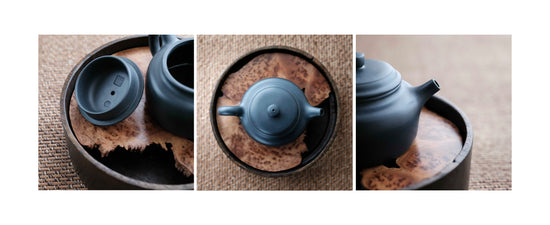

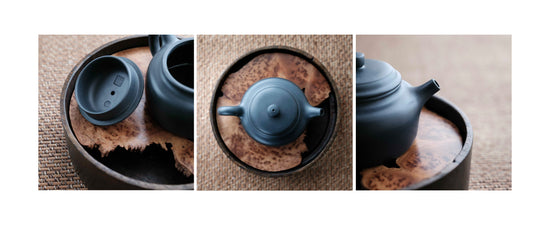





Yixing Vintage Green Clay Dé Zhōng Teapot
- Regular price
-
£380.00 - Regular price
-
- Sale price
-
£380.00
Couldn't load pickup availability
A new Batch of Dezhongs is being crafted now; we anticipate shipment at the end of June 2025. Payment with instalments is available at check-out.
德鐘老綠泥紫砂壺
100% genuine, handcrafted Yi Xing Green Clay (Aged Lü Ní 老綠泥) Teapot. Using 120-year-old rare clay foraged from Yellow Dragon Mountain 黃龍山 and fired using traditional dragon kiln methods, Master Zhang Hui 張惠 meticulously crafted this classic teapot Dé Zhōng.
Originally created by master potter Shao Daheng during the Qing Dynasty, Dé Zhōng has been cherished across generations for its perfect balance of simplicity, practicality and symbolism. Its name, 德 Dé, representing Great Virtues, and 钟 Zhōng, symbolising integration or bell, intentionally embodies the vessel's purpose - to be a container for noble virtues.
The pot's shoulder falls naturally, seamlessly blending with the spout's base, portraying the silhouette of an upright, noble individual. Its graceful lines exude an airy elegance, reflecting timeless sophistication.
The curvature around the pot's opening resembles gently pursed lips, bringing a calm and dignified aura to your brews. Delicately adorned with a line on the lid, it beautifully balances feminine grace with masculine strength, providing harmony for any tea you want to explore.
From its refined spout to its meticulously crafted handle, every detail of the Dé Zhōng Teapot speaks of precision and artistry. Rooted in Chinese tea culture, it enriches daily rituals with enduring elegance and grace.
Clay Originality & Superiority:
Our Yi Xing teapots originate from the pristine mineral deposits renowned for crafting the finest teapots - Yellow Dragon Mountain 黃龍山.
Our teapots are crafted from clay aged over 100 years, and sourced directly from its original reservoirs. Access to such pristine clay is extremely rare today, as the Mountain has been under restoration since 2007.
Genuine Yi Xing Teapot Offers:
• No chemicals & additives.
• Better breathability to enhance the flavours of your tea.
• Slow heat transferability, making it the best suitable teaware for aged teas.
• Prolonging aromas of the tea.
• The more you use it, the more lively and luminous it becomes.
• Antibacterial & rich in natural minerals that enhance, sweeten and balance the tea.
• A valuable collectable to be cherished for generations.
About the Artist
Master Zhang Hui 張惠
National Senior Arts & Crafts Artist · Traditional Craft Master · Inheritor of Yixing Zisha Pottery
Zhang Hui is a nationally recognised senior arts and crafts artist, a master of traditional Chinese craftsmanship, and a respected inheritor of the Yixing Zisha pottery tradition. She serves as a board member of the China Zisha Association, a member of the China Arts and Crafts Society, and an executive member of the China Zisha Appreciation and Collection Committee. Her works have won numerous awards and are held in museum collections across China.
Originally from Guizhou and born in the 1960s, Zhang Hui left her homeland in early 1987 and moved to Yixing—a place whose deep cultural roots and rich ceramic heritage immediately captivated her. Perhaps destined by affinity, she married Wu Xinyuan, a renowned collector and researcher of antique Zisha teapots from the very birthplace of the tradition, and together they embarked on a shared artistic journey.
Drawn to the timeless charm and natural elegance of antique Zisha teapots, Zhang Hui immersed herself in study and practice. In the 1990s, she formally entered the Yixing Zisha Craft Factory, where she learned under several esteemed masters. These formative years laid a strong foundation for her future in ceramic artistry.
Zhang Hui has worked quietly and diligently for over thirty years, devoted herself to the clay with unwavering care and discipline. She holds exceptionally high standards for her materials, often working late into the night, shaping each teapot to balance form, function, and feeling. Her rework studies of Ming and Qing-era teapots are so refined that experts can scarcely distinguish them from originals.
In recent years, her creative direction has evolved. She believes that while tradition forms the root of any true craft, it must also speak to the present. Her newer works are characterised by an elegant balance of strength and grace—combining the gentle, flowing lines often seen in feminine forms with bold structural integrity and a deep sense of classical restraint.
Passionate about passing on Zisha's legacy, Master Zhang has opened her studio to students. Through her teaching and influence, over a hundred emerging artists now continue the tradition—each one a living echo of her commitment.
Cultural Tradition
Dé Zhōng Teapot is considered to be one of the classic Yi Xing teapot styles, named by the clay pot master Shao Da Heng 邵大亨 in the Qing dynasty during the Jia Qing period.
Yixing Zisha Culture:
1. Harmony Between Nature, Craft, and Spirit
In Chinese culture, tea is not merely a beverage but a practice of cultivating awareness, balance, and presence. The Yixing teapot aligns with this view, embodying 天人合一 (harmony between heaven and human) through its material, form, and use.
* Material from the earth: Zisha clay is drawn from the mineral-rich strata of Huanglongshan in Yixing, Jiangsu province—imbued with natural vitality and breathability.
* Craft shaped by human intention: Every pot is handmade, often by artists who view their work as a form of self-cultivation.
* Spirit revealed through tea: The pot comes alive only when used. Over time, the clay absorbs the essence of the tea, creating a unique relationship between the user, tea, and pot.
2. Cultural Heritage and Resistance to Industrialisation
In modern times, the Yixing teapot is a cultural anchor against mass production and homogenisation. It upholds the values of:
* Slowness and intentionality
* Respect for nature and ancestry
* Craftsmanship over convenience
3. Artisan Legacy and Cultural Continuity
Yixing teapot pottery dates back to the Song Dynasty and flourished during the Ming and Qing dynasties when loose-leaf tea became widespread. Each pot reflects a lineage of regional skill, family techniques, and artistic expression passed down through generations.
* Signatures, seals, and forms tell stories of dynasties, masters, and aesthetic schools.
* The pot represents not mass production but a slow, intentional relationship with craft and earth.
4. A Living Object: The Pot That Remembers
Zisha clay is porous yet tight, allowing it to "breathe." With each brew, the pot develops a patina and begins to hold memory—retaining the fragrance and character of the tea. This makes each teapot a personal archive, deepening with time and use. It is said:
“壶养人,人养壶。”
“The pot nurtures the person, and the person nurtures the pot.”
What's Included
• Worldwide Shipping
• Dé Zhōng Yi Xing Green Clay Teapot
• Gift box
• 1 tea towel
• Certificate of Authenticity
• Priming & Seasoning support
Materials
Aged Green Clay Lü Ni From 1910
Dimensions
Volume: approximately 120ml
Care & Tips
Given the high breathability nature of this teapot, we recommend dedicating 1 teapot to 1 specific tea only (or at the very least 1 type of tea) and pairing it with aged White Teas, Red, Oolong, Bird King Da Hong Pao or Master's Black.
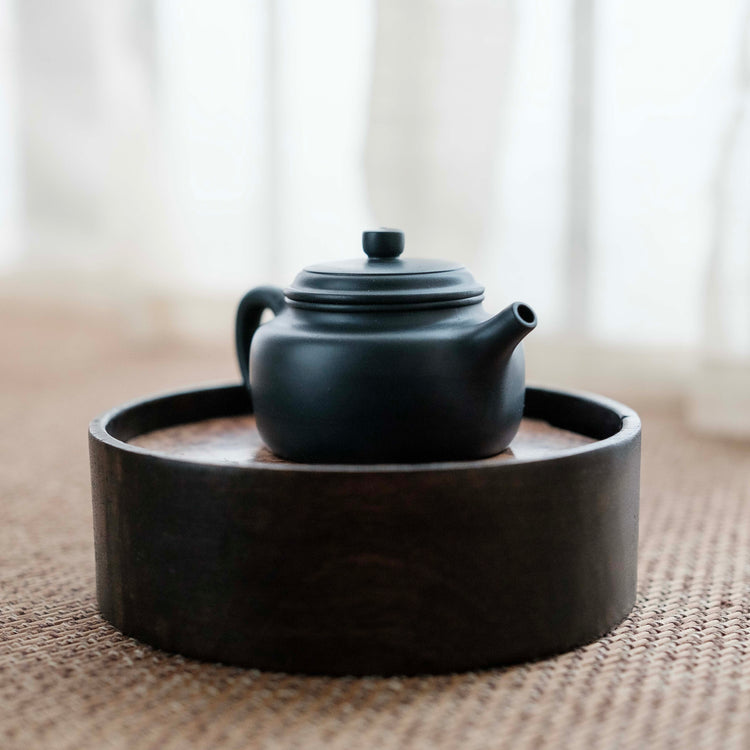
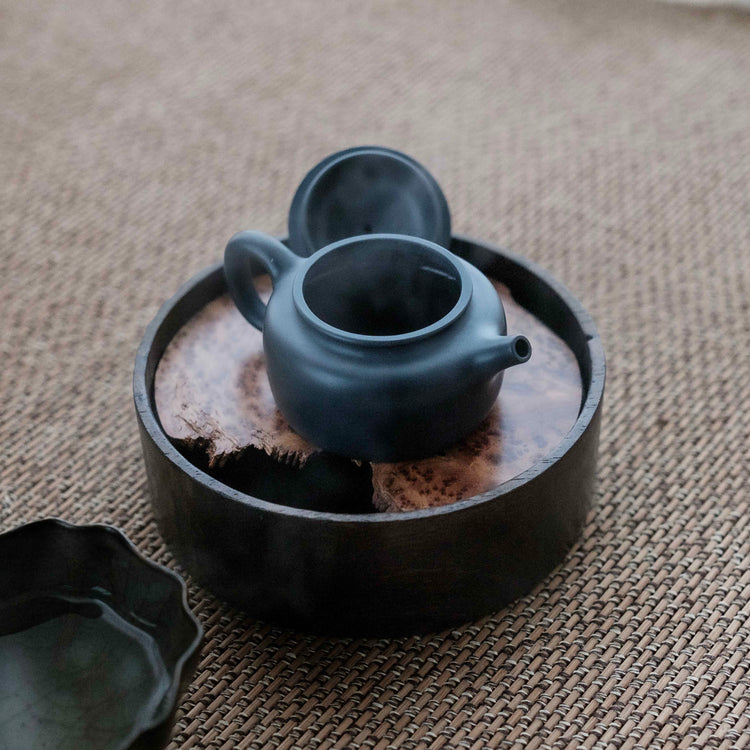
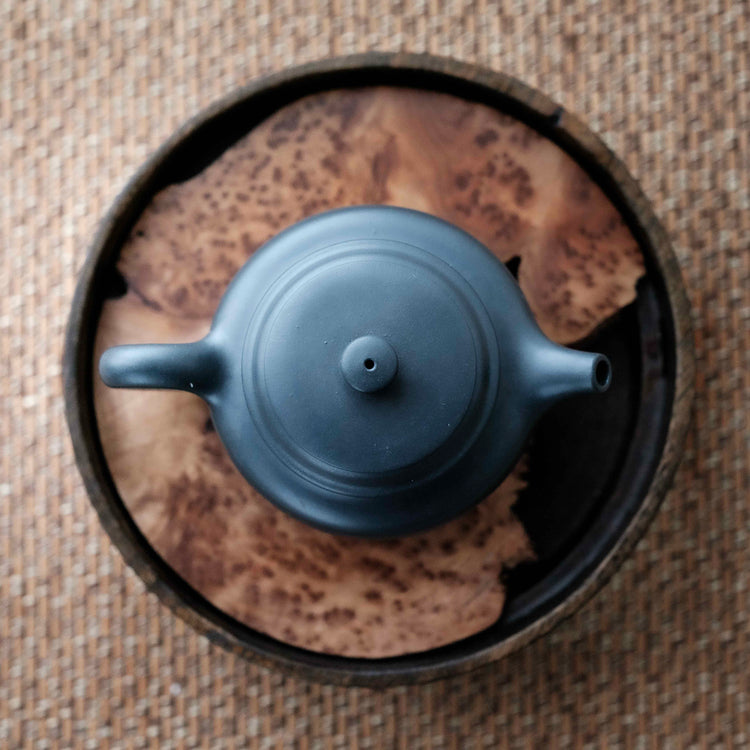
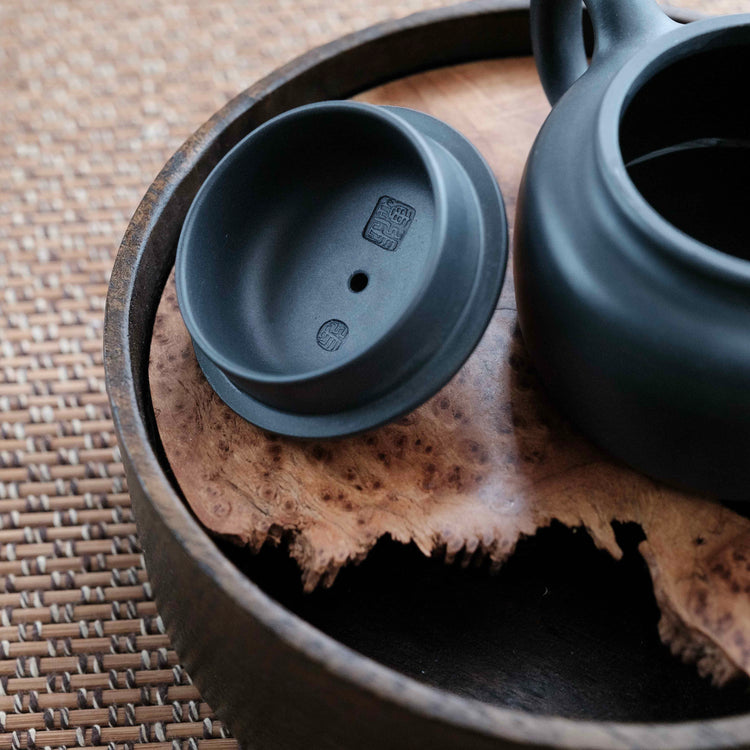
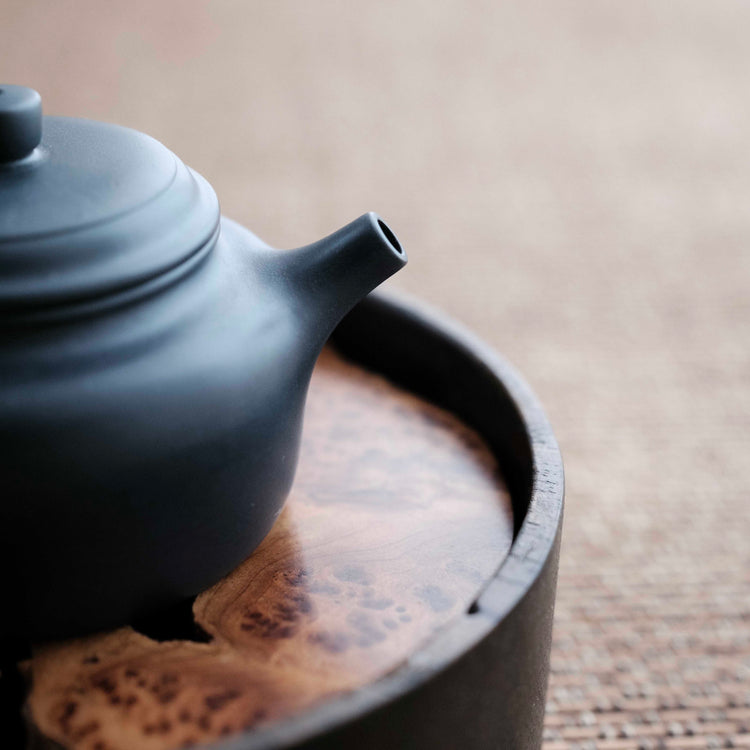
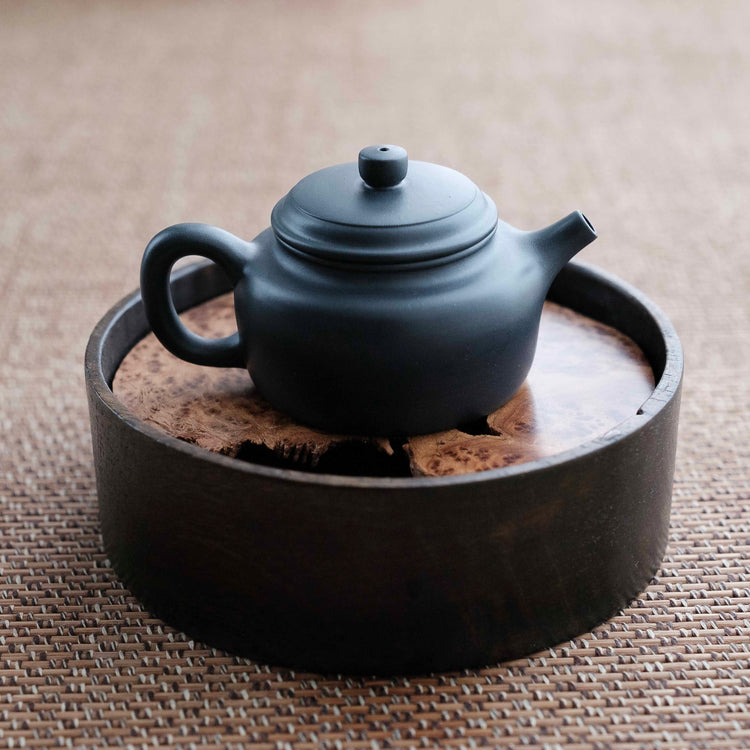

Yixing Vintage Green Clay Dé Zhōng Teapot
- Regular price
-
£380.00 - Regular price
-
- Sale price
-
£380.00
I was hesitant to spend money on such a teapot because I have cracked and broken many teapots, gaiwans and cups over the years.
However, today, holding this vessel, I feel like I’ve met my pot. This is an item in my tea life that I will cherish (and hopefully not break) for my lifetime.
I am incredibly grateful.
It really fits my hands, not only in a physical sense but energetically. It’s been a lovely experience to get to know this teapot.
The green color is beautiful and incredibly unique. The texture is quieting and simply, enjoyable.
The handle is perfection and the shape really enhances the experience of connecting with the vessel. The more I use this teapot, the more I appreciate the craftsmanship.
Lastly, the tea tastes absolutely lovely!







